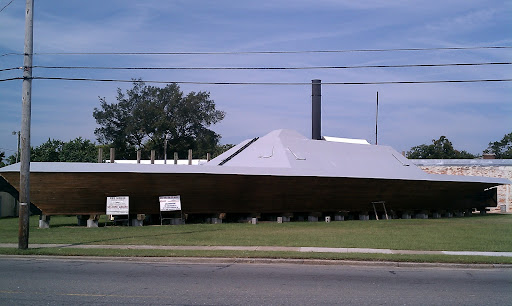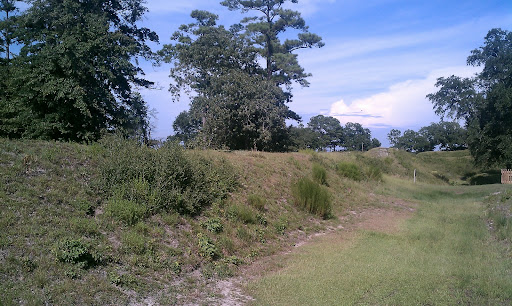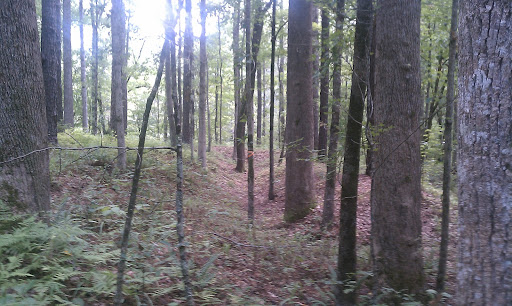 |
| From Civil War Battlefields |
In order to consolidate the gains of his successful expedition on the North Carolina coast, and prevent rebel ironclads descending the Dismal Swamp Canal from Norfolk, VA, Major General Ambrose Burnside ordered General Jesse Reno to march north with 3000 men and destroy the locks at the southern terminus of the canal. The majority of Reno's troops, misled by a treacherous local guide, followed an elongated route, arriving on the field fatigued. Warned of Reno's approach, Colonel Ambrose Wright deployed the Third Georgia infantry, a four gun battery, a small cavalry detachment, and some North Carolina militia.
Reno's forces outnumbered Wright perhaps 8 to 1, but Wright chose his position well, posting his troops along the road at the northern end of open fields constricted by woods on both flanks. Wright also took advantage of irrigation ditches, posting his infantry in one and piling burning fence rails in another perhaps 200 yards in his front. The smoke from the burning rails obscured his position and may have led Colonel Hawkins, commander of the Ninth New York, to underestimate the strength of Wright's position.
Reno ordered most of his infantry to deploy in the woods to the left of the open area fronting the rebel position. Colonel Hawkins sensed an opportunity to break the enemy line with a bayonet charge and instead ordered the Ninth New York to charge the enemy's line. Soon after the Ninth crossed the burning ditch, a withering fire of musketry and canister stopped their advance cold and drove the to seek the shelter of the woodline where several other Federal regiments had deployed. Most of the 113 Federal casualties at South Mills fell during Hawkins's ill-fated bayonet charge.
Depsite their success against the Ninth New York, Wright's men were running out of time. The Federal Fifty-First Pennsylvania and 21st Massachusetts regiments fixed bayonets and moved out from the woods on the Federal left and launched another bayonet charge. Reno had also deployed the Sixth New Hampshire regiment on his left, where they advanced, delivered a volley, and sought out the rebel right flank. Wright wisely withdrew his small force before being completely overwhelmed.
The Federals remained in place for the night. Though within 3 miles of the canal locks he had been sent to destroy, Reno gave credence to rumors of Confederate reinforcments and withdrew the following day. Despite failing to achieve his primary objective, Reno considered the expedition a success. The fall of Norfolk less than one month later forever neutralized the threat of rebel ironclads descending the canal, however unlikely it may have been.






